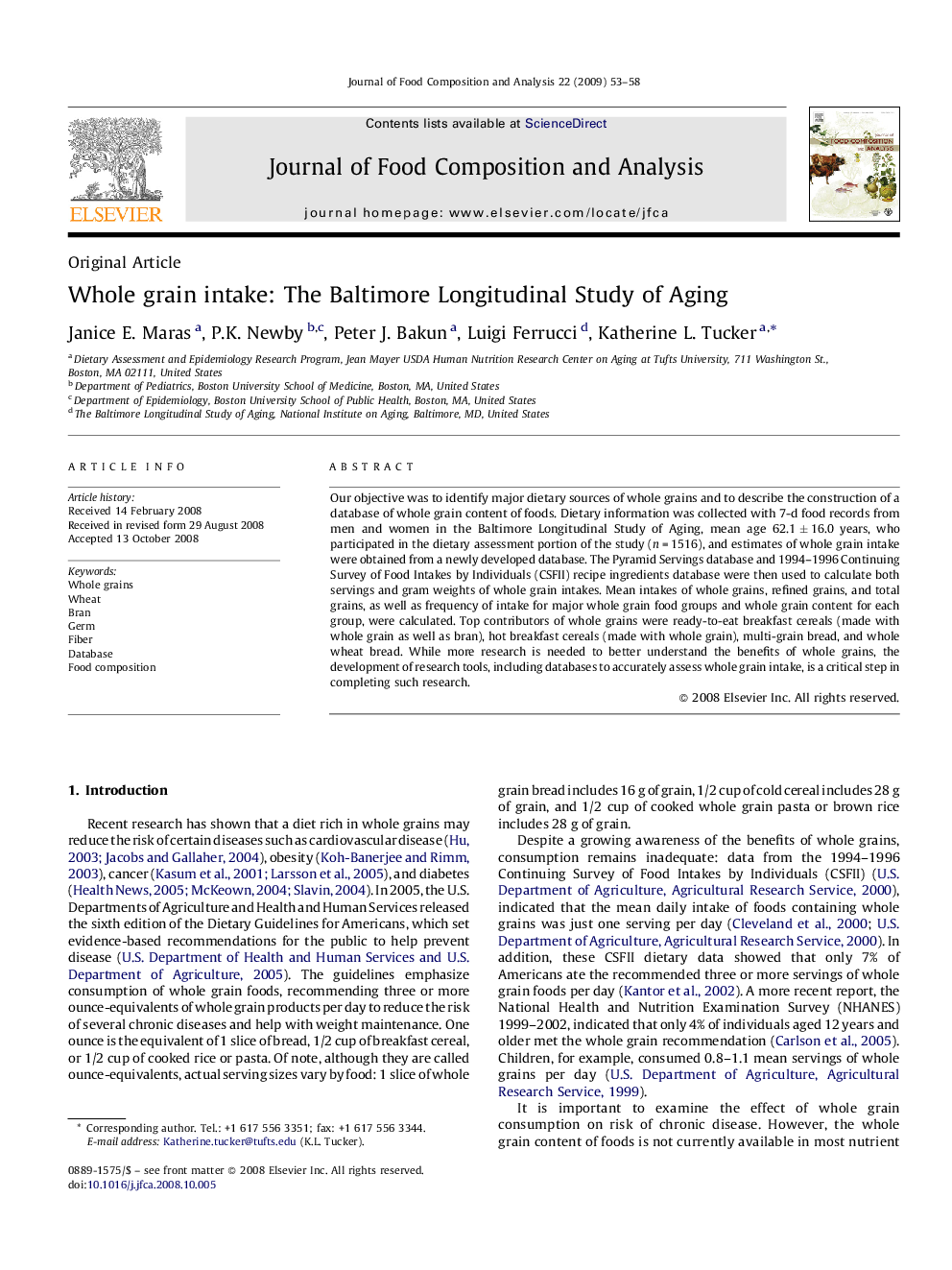| Article ID | Journal | Published Year | Pages | File Type |
|---|---|---|---|---|
| 1219174 | Journal of Food Composition and Analysis | 2009 | 6 Pages |
Our objective was to identify major dietary sources of whole grains and to describe the construction of a database of whole grain content of foods. Dietary information was collected with 7-d food records from men and women in the Baltimore Longitudinal Study of Aging, mean age 62.1 ± 16.0 years, who participated in the dietary assessment portion of the study (n = 1516), and estimates of whole grain intake were obtained from a newly developed database. The Pyramid Servings database and 1994–1996 Continuing Survey of Food Intakes by Individuals (CSFII) recipe ingredients database were then used to calculate both servings and gram weights of whole grain intakes. Mean intakes of whole grains, refined grains, and total grains, as well as frequency of intake for major whole grain food groups and whole grain content for each group, were calculated. Top contributors of whole grains were ready-to-eat breakfast cereals (made with whole grain as well as bran), hot breakfast cereals (made with whole grain), multi-grain bread, and whole wheat bread. While more research is needed to better understand the benefits of whole grains, the development of research tools, including databases to accurately assess whole grain intake, is a critical step in completing such research.
